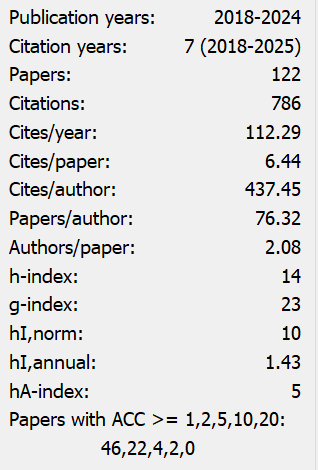Research on the Digital Transformation Path of Ice and Snow Venues in Hebei Province
Abstract
Since the successful co-hosting of the Winter Olympics by Beijing and Zhangjiakou, China's ice and snow venues have experienced rapid development under the dual impetus of policy support and market demand. Leveraging its geographical and strategic advantages, Hebei Province has actively improved its venue infrastructure and competitiveness. However, in the context of the digital era, traditional operational models face increasing challenges. This study, using literature review and logical analysis, examines the current situation of Hebei's ice and snow venues and explores digital transformation strategies in areas such as intelligent decision-making, service innovation, and operational optimization. Targeting issues like outdated infrastructure and limited data sharing, the paper offers practical solutions to support the high-quality and sustainable development of the regional winter sports sector.
References
[2] General Office of Hebei Provincial People's Government. (2018, May 20). Hebei Ice and Snow Industry Development Plan (2018-2025). Retrieved February 13, 2025, from
[3] Hebei Provincial Sports Bureau. (2025, January 4). Five Ice Games | In the post-Olympic era, Hebei's ice and snow sports are booming. Retrieved February 13, 2025, from
[4] Zhou, Q. (2024). Theoretical Logic and Promotion Path of Digital Technology Empowering the Transformation and Development of Ice and Snow Industry. Liaoning Sports Science and Technology, 46(6), 13–19.
[5] Wang, Y., Wang, C., & Guo, H. (2024). The Advantages, Realistic Dilemmas and Optimization Paths of Digital Economy in Driving the High-Quality Development of Ice and Snow Sports Tourism Industry. Sports Excellence, 43(7), 36–39.
[6] Jiang, S., Lin, W., & Wu, Y. (2023). Research on Digital Transformation of Ice and Snow Tourism Industry in Heilongjiang Province. Heilongjiang Social Sciences, (1), 49–56.

This work is licensed under a Creative Commons Attribution 4.0 International License.
Copyright for this article is retained by the author(s), with first publication rights granted to the journal.
This is an open-access article distributed under the terms and conditions of the Creative Commons Attribution license (http://creativecommons.org/licenses/by/4.0/).


























